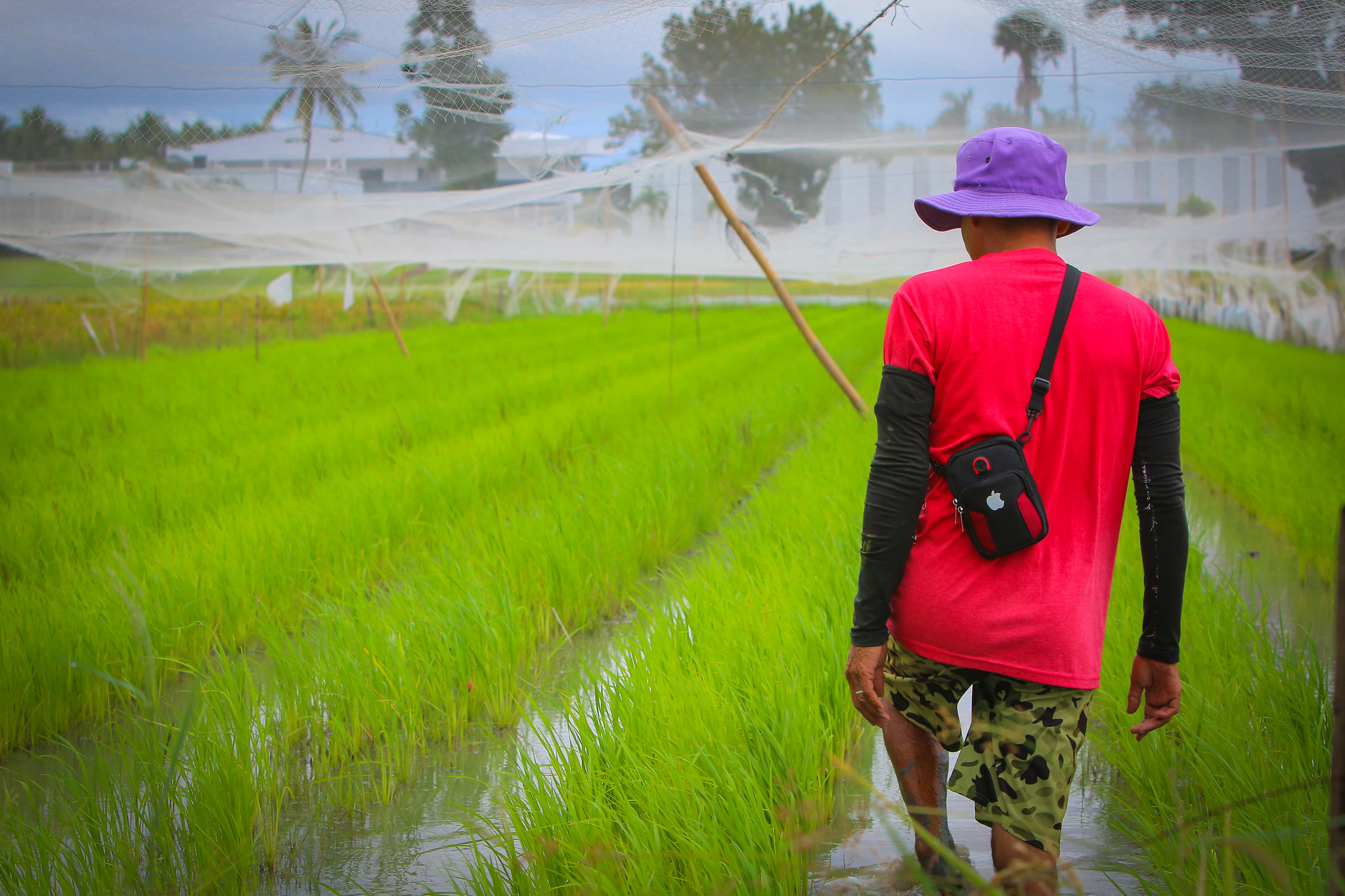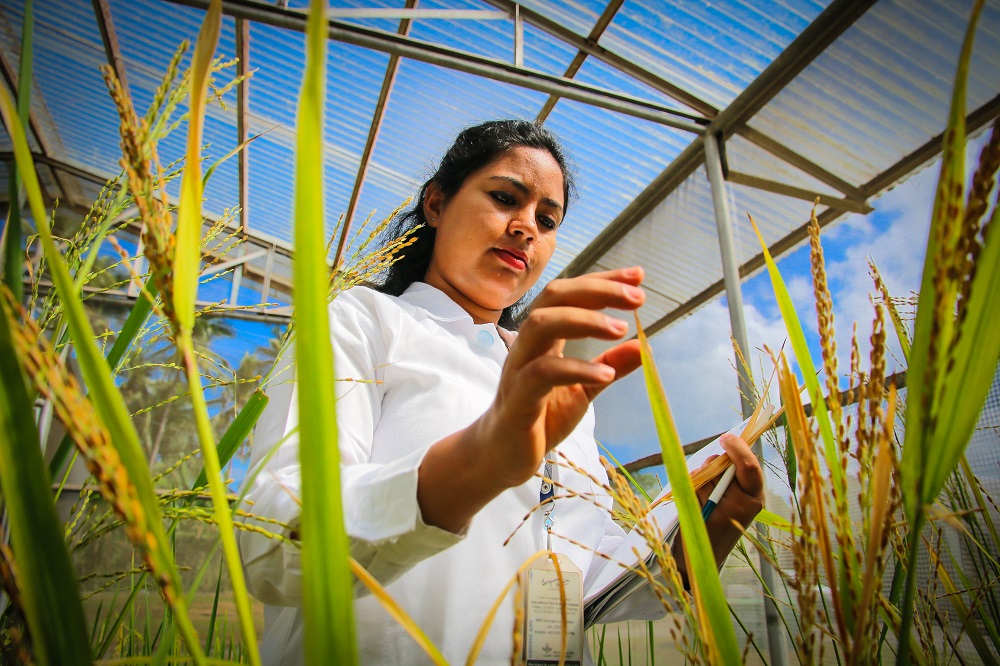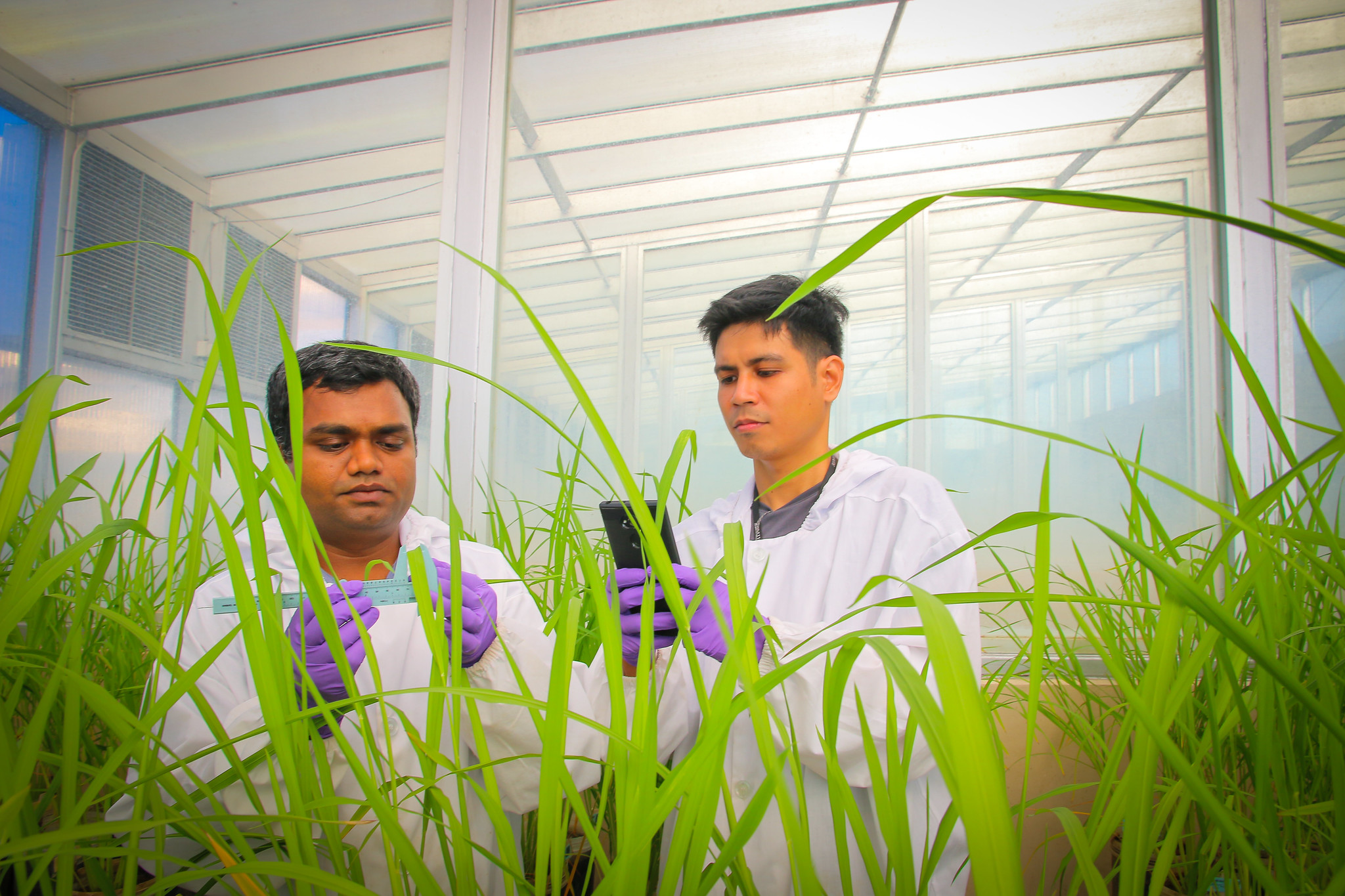“Our vision is to be the center of excellence for rice breeding in the world. We want the world to look up to IRRI for what we create, offer, and bring to the table to help address food security challenges”
Hans Bhardwaj
Lead, Rice Breeding Platform
At the start of 2019, Hans Bhardwaj (photo above), formerly a senior research director at Corteva Agriscience joined the International Rice Research Institute (IRRI) as the global head of its Rice Breeding Platform. In a career spanning 40 years in the seed industry, Dr. Bhardwaj has racked up extensive global experience in building and leading successful commercial plant breeding programs and teams around the world. He also led the establishment of a global network of plant breeding technology hubs for the company.
This is his first time working at a not-for-profit and research-for-development organization.
Dr. Bhardwaj shares his insights on the differences between private and public sector research priorities, rice breeding as the core business of IRRI, and his vision of maintaining the institute’s place as the global center of excellence in rice breeding.
What is the difference between doing research in the private sector and an organization like IRRI?
The motivation drivers are very different. In the private sector, research needs to be funded by its own generated profits. We have to generate enough business and profits to reinvest back into the research in a sustainable manner. We don’t have that kind of incentive in the public sector because we do not generate any profits here. We are only a cost center. We fund the research with the money we receive as grants either from public sources or through bilateral projects.
In the private sector, there is a sense of urgency to develop and deliver products at a set and pre-determined time and pace. Pace and time are of essence for the success of the business. We do not have that kind of urgency and pull in the public-sector research organizations. However, that doesn’t mean we shouldn’t be accountable. We should be highly accountable and very responsible because we have been entrusted to create something for the broader public good. We must make sure we deliver on that in a timely manner.
Do you think research at IRRI should be profit-driven?
It doesn’t need to be profit-driven and it doesn’t have to be a business but we can still manage it like a business so that we are very efficient and cost effective in everything we do. We must make the best use of our time and resources and produce the best results at the shortest possible time. Same business principles and strategies can apply to how we manage and run the research operations at IRRI. We ought not to be driven by profits but we can certainly be driven by doing something for the broader public good. Not many people in this world are fortunate enough like me and others at IRRI who get the opportunity to use science in a way that will help improve food security and reduce poverty.
Given your private sector background, what changes do you want to do at IRRI?
IRRI has a tremendous track record of its performance and impact. To maintain and further continue building that brand name, I will like to emphasize on the following aspects
- Enhance the skill set, competencies, and the capacity of the staff of the Rice Breeding Platform so that we can continue delivering on our commitments and meet the expectations.
- Don’t do science only for the sake of science but for a purpose (“science with a purpose”) to deliver on our mission of research-for-development.
What are the most crucial issues that the Rice Breeding Platform could address?
IRRI has done a lot of great work over the last 60 years, particularly in developing new rice varieties and improved germplasm. IRRI clearly made a lot of impact on increasing agriculture productivity around the world wherever rice is grown. But lately, that momentum has slowed down.
In many countries, farmers continue growing very old varieties released 20 or 30 years ago. There has not been much progress or change. One of the goals of the Rice Breeding Platform would be to come up with better varieties faster that could replace these old varieties. To do that, we need to take a fresh look at what exactly the market needs are—from rice-growing farmers to rice consumers. We all need to understand those needs better. We should then design our breeding or germplasm improvement programs accordingly so that we really work and keep those targets as the focus so when our products come out we already know where they will fit. That’s what I want to see, a closer understanding of the market needs (farmers, millers, and consumers) and use it as a guideline or blueprint to guide our breeders to tailor-design products to meet those needs.
(The following portion is based on Dr. Bhardwaj’s presentation to the IRRI Board of Trustees in April 2019.)
Rice breeding has been and should continue to be the core business of IRRI
Rice breeding has been the core business and strength of IRRI for many decades and it still continues to be very important. While we are lately trying to diversify and expand into related developmental areas so as to fully realize the impact of our research, we need to make sure that as we grow and expand, we don’t drift too much from our core and don’t engage in building things that do not sustainably support the core of our business.
As I understand it, the purpose of our existence is twofold. One is to be the best rice breeding organization and continue improving the rice germplasm to develop competitive varieties and hybrids. The second purpose is to make sure that our research partners and other public breeders have access to this most elite rice germplasm and the modern breeding technologies that we are trying to develop and deploy at IRRI, and help them become as competent as IRRI. I think this is going to be a joint success.
Our vision is to be the center of excellence for rice breeding in the world
As I see it, and as I have discussed with my many colleagues in rice breeding platform, our vision is to be the center of excellence for rice breeding in the world. We want to make sure that whatever we choose to do we do it to the best of our capabilities and capacities and, at the same time, we do it better than anyone else. We want the world to look up to IRRI for what we create, offer, and bring to the table to help address food security challenges.
Phenotyping is the key to the success of any plant breeding program
In today’s world of plant breeding, phenotyping capacity and capability is so fundamental and the real key to success. At the same time, it is also one of the most challenging and most expensive activity we do in plant breeding. A lot of people fail to understand and appreciate that. If you don’t have good phenotyping capabilities, anything else you do is not going to really give you the desired results.
Breeding rice at IRRI
We continue our efforts to modernize all our rice breeding programs at IRRI. Our irrigated rice breeding program has already progressed ahead in adapting some of the new modern breeding approaches and technologies. Other programs, particularly rainfed and hybrid rice breeding programs have some catching up to do. Our priority is to make sure that when we talk about breeding rice at IRRI, we talk about the same breeding philosophy and use the same language. It doesn’t matter whether its inbred varieties or hybrids, irrigated or rainfed breeding program. We want all these programs at the same level as far as the deployment of technologies and breeding approaches are concerned.
Rate of genetic gain: you can’t improve it if you can’t measure it
Our quantitative genetics group has done wonderful work in developing a methodology to measure the rate of genetic gain. They have done some benchmarking using historical data. We can now set new targets and objectives for the rate of genetic gain. I strongly believe that something you cannot measure, and measure it well and consistently, you cannot improve it. Measuring something precisely and consistently in the same manner year after year or season after season is fundamental to plant breeding progress.
We need more flexibility to drive the IRRI agenda
Our CGIAR Research Program core funding sources are shrinking and we are increasingly becoming dependent on bilateral grants. There’s nothing wrong with it but it comes with some specific expectations that sometimes might not align with IRRI’s agenda. We need to have a little more flexibility so that we can drive the IRRI agenda. IRRI as an organization has its own agenda and commitments. When you enter into bilateral arrangements, funders might have their own agenda that either does not align with IRRI’s agenda or it is too narrowly focused. How do we align those? Not to sound defensive, but having that freedom is critical and essential for creativity.
We need to attract the younger generation of scientists and keep them excited
Our biggest challenge going forward would be to attract, retain and keep the younger generation of researchers excited about the opportunities at IRRI. Today’s generation is much smarter, well-informed, and well-equipped. They have new opportunities come their way every day. Getting this new generation of scientists and researchers to stay excited about the opportunities at IRRI is a challenge. How are we going to attract and retain them? We need to be very innovative because their aspirations and desires are very different from my generation. We need to provide them with the right environment to ensure they stay as excited and committed as they were when they came to work on the first day. It is our responsibility as leaders to provide and create that kind of environment and incentives.
We need to stay relevant and continue earning new laurels
IRRI has had some very significant accomplishments and contributions over the years since its inception that we should be proud of. The number one criterion for measuring the success of a plant breeding organization like IRRI is how many products were eventually released and commercialized. So far more than 430 IRRI-bred rice varieties have been released for commercial cultivation in ASEAN countries. This year alone, 13 IRRI-bred rice varieties and hybrids were released for commercial cultivation in different countries around the world. This is a very significant contribution. But we can’t just rest on our laurels. We need to stay relevant and continue earning new laurels.









